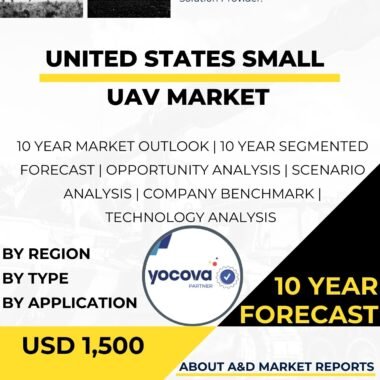Description
The Network Centric Warfare (NCW) market in Australia holds significant importance for the country’s defense capabilities, enabling the Royal Australian Air Force (RAAF), the Royal Australian Navy (RAN), and the Australian Army to achieve enhanced situational awareness, command and control, and interoperability. Network Centric Warfare is a military doctrine that leverages advanced information and communication technologies to enable real-time data sharing, collaboration, and decision-making among military units and platforms. This article provides a comprehensive overview of the Australia Network Centric Warfare market, including its significance, current capabilities, major players, technological advancements, applications, and future prospects.
The significance of the Network Centric Warfare market in Australia lies in its role in improving the efficiency and effectiveness of the country’s defense operations. As a member of the Five Eyes intelligence alliance and a key player in regional security efforts, Australia faces diverse security challenges in the Indo-Pacific region. The adoption of Network Centric Warfare principles empowers the Australian Defense Force (ADF) to integrate information from various sensors, platforms, and units, enabling commanders to make informed decisions rapidly and enhancing the overall military operational tempo.
The Australia Network Centric Warfare market encompasses a range of technologies and systems that facilitate real-time data sharing and communication among military assets. These technologies include advanced communication networks, data links, sensor systems, command and control centers, and software applications that enable the fusion and dissemination of information to military personnel at all levels.
The current capabilities of the Australia Network Centric Warfare market reflect the ADF’s ongoing efforts to modernize its defense infrastructure and adopt cutting-edge technologies. The ADF has invested in secure communication networks, such as the Australian Defence Information Environment (ADIE), to facilitate seamless information exchange among its air, land, and maritime assets. Additionally, the ADF has incorporated advanced sensor systems and data fusion technologies into its various platforms, allowing for comprehensive situational awareness and the sharing of critical intelligence across the battlespace.
Domestic companies, such as EOS Defense Systems, have contributed to the development and implementation of Network Centric Warfare technologies in Australia. These companies collaborate with the ADF and international partners to design, integrate, and deliver network-centric solutions tailored to the country’s defense needs.
Major international players in the Network Centric Warfare market, including Lockheed Martin, Boeing, and Northrop Grumman, have a strong presence in Australia. These companies offer advanced communication systems, data links, and command and control solutions, supporting the ADF’s efforts to enhance its NCW capabilities.
Technological advancements are a driving force in shaping the future of the Australia Network Centric Warfare market. Research and development efforts focus on improving data fusion and analysis algorithms, artificial intelligence integration, cybersecurity measures, and the development of multi-domain command and control capabilities.
Data fusion and analysis algorithms are crucial in handling the vast amounts of data generated by various sensors and platforms. Advanced algorithms enable the real-time processing and integration of data from different sources, providing a coherent and comprehensive picture of the battlespace to decision-makers.
The integration of artificial intelligence and machine learning technologies enhances the ADF’s ability to automate certain tasks, optimize operations, and identify patterns or anomalies in data. AI-driven solutions can support decision-making processes and reduce the cognitive load on military personnel.
Cybersecurity is a critical aspect of Network Centric Warfare, as it ensures the integrity and confidentiality of sensitive military information. The ADF places high importance on securing its communication networks, data transmission, and command and control systems to prevent unauthorized access or cyber threats.
The development of multi-domain command and control capabilities is a key focus in the future of Network Centric Warfare. This involves the seamless integration and coordination of air, land, maritime, space, and cyber assets, enabling the ADF to conduct joint operations and respond to complex threats in a unified and effective manner.
Looking ahead, the Australia Network Centric Warfare market is expected to witness continued growth and investment. As the ADF seeks to enhance its NCW capabilities, there will be opportunities for domestic and international companies to collaborate on research, development, and implementation of advanced NCW technologies.
Moreover, the ADF’s commitment to developing a joint and integrated force requires continuous advancements in NCW capabilities. The integration of new platforms, such as unmanned systems and next-generation sensors, into the ADF’s network-centric ecosystem will be critical for maintaining a technological edge in the region.
Furthermore, the growing emphasis on data analytics and decision support systems will drive the demand for advanced software solutions that enable commanders to process and visualize information efficiently. The adoption of cloud computing and distributed computing technologies will also play a role in optimizing data storage and processing in Network Centric Warfare operations.
In conclusion, the Australia Network Centric Warfare market holds significant importance for the country’s defense capabilities and operational effectiveness. The adoption of NCW principles empowers the ADF to achieve enhanced situational awareness, command and control, and interoperability among its air, land, and maritime assets. Collaborations between domestic and international companies drive research, development, and innovation in the sector, enhancing the ADF’s NCW capabilities. Technological advancements, including AI integration, data fusion algorithms, and multi-domain command and control, will be crucial in shaping the future of the market. Continued investments in research, development, and international partnerships will be instrumental in maintaining Australia’s credible and effective Network Centric Warfare capabilities. As the ADF looks to modernize its defense infrastructure and optimize its operational effectiveness, the demand for advanced NCW technologies will continue to grow, positioning Australia as a key player in the global Network Centric Warfare market.




